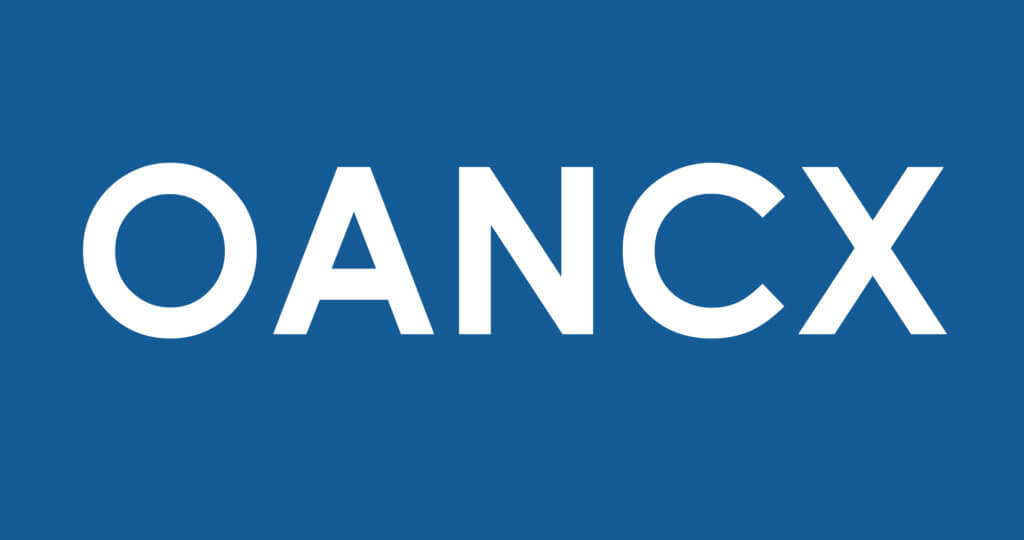Oakmark Bond Fund – Institutional Class
Average Annual Total Returns 12/31/20
Since Inception 06/10/20 4.90%
3-month 2.78%
Gross Expense Ratio: 2.82%
Net Expense Ratio: 0.59%
Expense ratios are based on estimated amounts for the current fiscal year; actual expenses may vary.
The Fund’s Adviser has contractually undertaken to waive and/or reimburse certain fees and expenses so that the total annual operating expenses of each class are limited to 0.64%, 0.59%, and 0.44% of average net assets, respectively. Each of these undertakings lasts until 1/27/2022 and may only be modified by mutual agreement of the parties.
Past performance is no guarantee of future results. The performance data quoted represents past performance. Current performance may be lower or higher than the performance data quoted. The investment return and principal value vary so that an investor’s shares when redeemed may be worth more or less than the original cost. To obtain the most recent month-end performance data, view it here.
We have entered a new era of fixed income investing. With interest rates at zero or negative in most developed economies, bond durations at all-time highs, and central banks tasked with unwinding a very substantial monetary experiment, the risks in this new era are substantially higher than in previous decades. Basic fixed income mathematics offer the best illustration of the challenges that come with near record low yields. For example, for the Bloomberg Barclays U.S. Aggregate Bond Index to repeat its five-year annualized return of +4.4%, assuming default risk is constant, we estimate that the 10-year U.S. Treasury yield would have to average approximately -1.05% over the next five years. Alternatively, holding the 10-year U.S. Treasury yield constant, the Bloomberg Barclays U.S. Aggregate Index option-adjusted credit spread, which measures credit default risk, would need to contract from +0.90% to -1.00%, for that index to repeat its prior five-year return. But the arithmetical limitations aren’t the only hurdles facing fixed income investors. The pandemic recession and subsequent recovery have been buoyed by relief packages from governments and by quantitative easing from central banks, which will likely generate a wide variety of outcomes for different bond instruments. Taken together, the challenges facing fixed income investors underscore the increased importance of high-quality research and prudent security selection over the coming years.
As a result, many financial professionals have counseled investors to simply avoid fixed income instruments altogether. However, this advice ignores the importance of fixed income investing for those who have objectives beyond the singular goal of total return maximization. Even with historically low interest rates, bonds still provide a reliable source of yield and they can help reduce correlation within a portfolio. Additionally, the fixed income universe still contains attractive investment opportunities—both relative and absolute—for managers who employ a fundamental, research-driven approach.
We launched the Oakmark Bond Fund to address the needs of those investors who recognize the value of fixed income investments and who seek to increase their income and lower their volatility over the long term. In managing the Fund, we draw on the same time-tested Oakmark investment philosophy to create a focused, bottom-up portfolio of fixed income securities. We focus on four core themes to navigate the risks in this new era of bond investing, including:
Bottom-Up Credit Selection
Our investment process starts with assessing the risk-and-reward proposition of an individual security first and then working our way outward to determine its fit within the broader portfolio. This “security first” approach ensures that our fundamental, issuer-level research drives our process, rather than attempting to time the markets or map out macro forecasts. This approach also addresses the new fixed income market in which issuer-level credit spread—rather than interest rates—drives both price volatility and return potential. This wasn’t always the case. For many years, U.S. Treasury rates almost single-handedly determined fixed income returns. From 1990 to 2015, the average annual range in U.S. five-year Treasury rates was 1.62%, 4.7x larger than the average range of the Bloomberg Barclays U.S. Aggregate Bond Index credit spread of 0.34%. Over the same time period, rate movement contributed to 85% of the index’s non-coupon, total return while credit spread contributed just 5%. Recently, however, credit spreads have more significantly affected bond returns as central banks have become more involved, structural pressures have more strongly influenced real growth and inflation, and less time has passed between default cycles. Over the past five years, the average annual range in U.S. five-year Treasury rates was 1.0%, while the range of index spreads was 0.42%. During that period, rate movement and credit spread each made up roughly 50% of the non-coupon total return. Our bottom-up approach enables us to focus more on individual issuers and rely less on macro forecasting.
Smart Diversification
Bond fund managers use diversification to minimize the risk of single-name defaults while still meeting their volatility and liquidity targets. However, a bond fund can be too diversified. Today, many hold an unwieldy number of securities—often more than 1,000 names—due to years of asset inflows, increased capacity needs and pressures to track the benchmark. In fact, the average number of holdings in our peer group, the Morningstar Intermediate Core Plus category, is 876, well above any statistical threshold needed for diversification. At those levels, fund excess return is almost entirely dependent on asset class weighting and rate positioning and individual security selection is rendered practically meaningless. The Oakmark Bond Fund prioritizes “smart” diversification by seeking to hold 75-125 names at any one time. That target should enable us to properly diversify the Fund and reduce security and portfolio level risk while still enabling our investors to benefit from specific credit selection.
Intrinsic Value Approach
The limited nature of traditional credit analysis—which focuses almost exclusively on liquidity, free cash flow, and leverage and interest coverage—fails to properly assess default risk. To address this shortsightedness, we combine fundamental credit analysis with an assessment of intrinsic value, taking into account various internal factors, including management quality, future earnings power, collateral value and the strength of the brand. Sometimes, the best fixed income investment opportunities come from companies that have poor credit metrics but offer highly compelling cases for intrinsic value coverage. We believe our process will help us identify such opportunities.
Long-Term Horizon
It’s more important than ever for fixed income investors to think and invest like long-term owners—a perspective that Oakmark has emphasized for decades. Due to technical pressures, liquidity constraints and general market volatility, short-term “noise” can now overpower a well thought out, long-term fixed income thesis. At the Oakmark Bond Fund, we use a disciplined and repeatable intrinsic value process to project where our holdings will be over the next three to five years, not the next three to five months. This long-term discipline enables us to think and behave rationally during times of increased volatility, whether those times involve market exuberance or panic.
To summarize, we are excited to offer a new bond product that employs a bottom-up selection process and combines intrinsic value research with traditional credit analysis. Using a sound, research-driven approach to diversification, we invest with a long time horizon so that our performance can reflect the value of our in-depth fundamental research. Although bond investors face challenges ahead, we hope to provide an attractive opportunity for those who want to maintain their allocation in a differentiated product.
Performance
The Oakmark Bond Fund returned 4.90% inception to date through December 31, 2020, and generated 318 basis points of excess returns versus its benchmark, the Bloomberg Barclays U.S. Aggregate Index. The quarter-to-date performance was 2.78% through December 31, 2020, generating excess return against the benchmark of 211 basis points.
Asset allocation was the main driver of the Fund’s returns, contributing 155 basis points of the Fund’s outperformance. In particular, the Fund’s overweight in corporate credit—which averaged 59.5% in the quarter while the benchmark averaged 28.5%–contributed most significantly to outperformance. Although the Fund has a more aggressive allocation to corporate credit than the benchmark, the quality of its corporate credit holding remains high. Approximately 17% of the overall portfolio is in corporate holdings rated “A” or higher, 28% is rated “BBB,” and 19% of the portfolio is in corporates rated “BB.” Just 5% of the overall portfolio is invested in “B” or below rated credit. We also maintain notable underweight positions in volatile sectors, like basic materials and energy.
Security selection was the second-largest contribution to performance in the quarter, adding 33 basis points of relative performance. Important contributors included Southwest Airlines 5.125% 6/15/27, Marriott International 4.625% 6/15/30 and Cenovus Energy 5.375% 7/15/25.
Finally, an underweight to U.S. government backed securities, along with short curve positioning across the portfolio, produced the majority of the remaining positive relative return. Our Fund’s duration ended the quarter at approximately 4.8 years, compared to the approximately 6.2 years for the index.
In contrast, the Fund’s cash position was a small detractor as risk assets rallied. Although our cash remained in the 6-8% range for most of the quarter, we expect to move that down to our target range of 2-4% over the next quarter. In terms of security selection, the largest single name detractors were Netflix 5.5 2/15/22, T-Mobile 4.0 4/15/22 and ChampionX 6% TLB 6/3/27.
Investment Outlook and Fund Positioning
The Oakmark Bond Fund entered the fourth quarter with a broad overweight position in corporate credit risk, an underweight position in duration and a modest overweight to the short end of the yield curve. As the quarter progressed, we opportunistically reduced some allocation to high-yield corporate bonds that were bumping up against call constraints and high-dollar investment-grade corporates that had moved to our intrinsic value credit spread targets. Due to the credit spread tightening that continued throughout December, the portfolio is slowly shifting toward higher credit quality.
As we look out over the longer term investment horizon, we remain encouraged about the prospects for an economic recovery. To be sure, just like the eradication of the virus itself, we expect the recovery to be non-linear, meaning that we expect further bouts of heightened market volatility. Against this backdrop, we are positioning our portfolio to maintain exposure to names that we believe will benefit from a reopening, while we are minimizing rate-sensitive exposures. We will continue to be opportunistic with additional credit additions if we see heightened periods of stress that are linked to transient issues. But we will maintain our strict sell discipline, especially in our lower quality exposures, if we see conditions that trigger meaningful, incremental credit tightening.
The securities mentioned above comprise the following percentages of the Oakmark Bond Fund’s total net assets as of 12/31/20: Cenovus Energy CC 04/25 5.375% Due 07-15-25 0.70%, ChampionX Loan 6.000% Due 06-03-27 1.10%, Marriott CC 03/30 4.625% Due 06-15-30 1.00%, Netflix 5.500% Due 02-15-22 2.50%, Southwest Airlines CC 04/27 5.125% Due 06-15-27 1.40% and T-Mobile CC 03/22 4.000% Due 04-15-22 1.50%. Portfolio holdings are subject to change without notice and are not intended as recommendations of individual stocks.
Access the full list of holdings for the Oakmark Bond Fund as of the most recent quarter-end.
Morningstar’s intermediate-term core-plus bond category is made up of portfolios that invest primarily in investment-grade U.S. fixed-income issues including government, corporate, and securitized debt, but generally have greater flexibility than core offerings to hold non-core sectors such as corporate high yield, bank loan, emerging-markets debt, and non-U.S. currency exposures. Their durations (a measure of interest-rate sensitivity) typically range between 75% and 125% of the three-year average of the effective duration of the Morningstar Core Bond Index.
The Oakmark Bond Fund invests primarily in a diversified portfolio of bonds and other fixed-income securities. These include, but are not limited to, investment grade corporate bonds; U.S. or non-U.S.-government and government-related obligations (such as, U.S. treasury securities); below investment-grade corporate bonds; agency mortgage backed-securities; commercial mortgage- and asset-backed securities; senior loans (such as, leveraged loans, bank loans, covenant lite loans, and/or floating rate loans); assignments; restricted securities (e.g., Rule 144A securities); and other fixed and floating rate instruments. The Fund may invest up to 20% of its assets in equity securities, such as common stocks and preferred stocks. The Fund may also hold cash or short-term debt securities from time to time and for temporary defensive purposes.
Under normal market conditions, the Fund invests at least 25% of its assets in investment-grade fixed-income securities and may invest up to 35% of its assets in below investment-grade fixed-income securities (commonly known as “high-yield” or “junk bonds”).
Fixed income risks include interest-rate and credit risk. Typically, when interest rates rise, there is a corresponding decline in bond values. Credit risk refers to the possibility that the bond issuer will not be able to make principal and interest payments.
Bond values fluctuate in price so the value of your investment can go down depending on market conditions.
The Bloomberg Barclays U.S. Aggregate Bond Index is a broad-based benchmark that measures the investment grade, U.S. dollar-denominated, fixed-rate taxable bond market. The index includes Treasuries, government-related and corporate securities, mortgage-backed securities (agency fixed-rate and hybrid ARM pass-throughs), asset-backed securities and commercial mortgage-backed securities (agency and non-agency). This index is unmanaged and investors cannot invest directly in this index.
The information, data, analyses, and opinions presented herein (including current investment themes, the portfolio managers’ research and investment process, and portfolio characteristics) are for informational purposes only and represent the investments and views of the portfolio managers and Harris Associates L.P. as of the date written and are subject to change and may change based on market and other conditions and without notice. This content is not a recommendation of or an offer to buy or sell a security and is not warranted to be correct, complete or accurate.
Certain comments herein are based on current expectations and are considered “forward-looking statements”. These forward looking statements reflect assumptions and analyses made by the portfolio managers and Harris Associates L.P. based on their experience and perception of historical trends, current conditions, expected future developments, and other factors they believe are relevant. Actual future results are subject to a number of investment and other risks and may prove to be different from expectations. Readers are cautioned not to place undue reliance on the forward-looking statements.
All information provided is as of 12/31/2020 unless otherwise specified.







